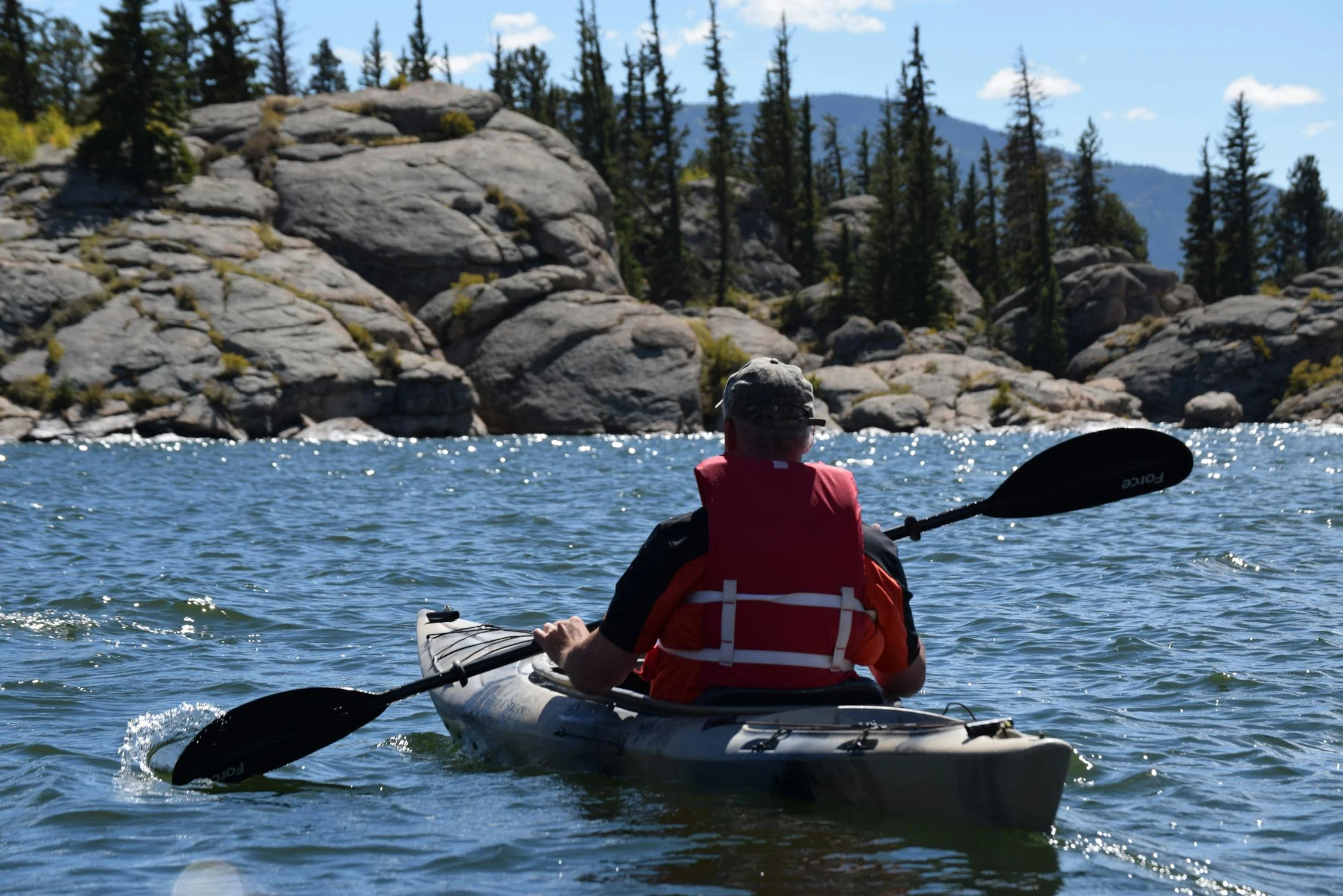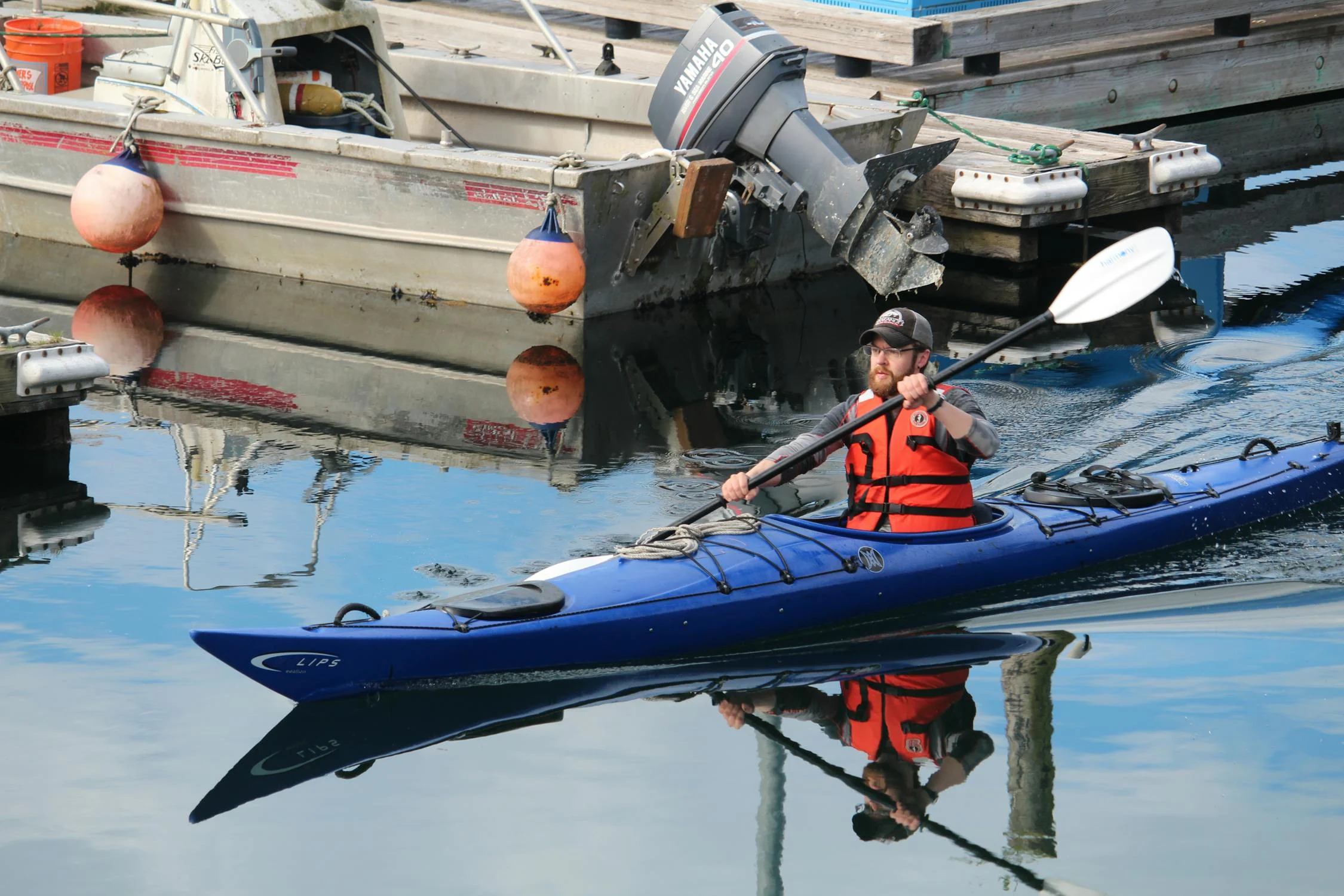Comprehensive water sports safety kit & equipment rental guide 2024
Welcome to the vibrant and exhilarating world of water sports, a realm where the splash of the waves and the thrill of speed create unforgettable moments. Whether you're skimming across the surface on a jet ski, finding your balance on a paddleboard, or navigating river currents in a kayak, the rush of water sports is unmatched. But beneath the exhilaration lies a fundamental truth—the sea of adventure is best navigated with the compass of safety.
Dive with us into a detailed exploration of essential safety kits, cutting-edge technologies, and insightful advice designed to ensure your water sports experience is not only thrilling but also secure. Let's embark on this journey together, where preparation meets adventure, and every wave brings a new discovery safely within reach.

Deep dive into safety gear: equipping for the waves ahead
Embarking on any water sports adventure requires not just skill and enthusiasm but also the right safety gear. Ensuring you're well-equipped is paramount to enjoying the water safely. Here, we detail the essential pieces of safety equipment every water sports enthusiast should consider, highlighting advancements in technology that enhance protection.
Comprehensive equipment overview
- Life jackets (PFDs): the cornerstone of water safety, life jackets should be non-negotiable in your gear list. Opt for U.S. Coast Guard-approved PFDs that fit snugly while allowing for freedom of movement.
- Helmets: essential for sports like kayaking or wakeboarding, helmets protect against head injuries. Look for models designed for water use, offering ventilation and water drainage.
- Wetsuits and drysuits: these not only provide thermal protection but can also offer buoyancy and protection from abrasions.
- Rescue and throw bags: crucial for swift water activities, these bags can be lifesavers during man-overboard situations or when navigating challenging waters.
Innovative safety technologies
The world of water sports safety is ever-evolving, with new technologies offering enhanced protection and peace of mind.
- Wearable tech for vital monitoring: devices that can monitor heart rate, temperature, and even detect falls into the water, alerting rescue services if necessary.
- GPS devices and personal locator beacons (PLBs): for adventurers exploring remote areas, these devices ensure you're never out of reach, even off the grid.
Equipping yourself with the right safety gear is the first step in a responsible water sports journey. By staying abreast of both foundational safety equipment and embracing innovative solutions, you ensure that your adventure on the water is both enjoyable and secure.
Safety gear for water sports equipment rentals: ensuring a secure adventure
When embarking on water sports adventures, the excitement of exploring new waters is often accompanied by the practical consideration of safety. Renting water sports equipment presents a unique opportunity to not only enjoy the thrill of various aquatic activities but also to do so with peace of mind, thanks to the inclusion of essential safety gear. This section delves into the critical safety equipment you should expect with your water sports equipment rentals, highlighting the importance of comprehensive safety gear for a worry-free and secure experience on the water.
The non-negotiables: safety equipment inclusions
A hallmark of a reputable water sports rental service is the inclusion of necessary safety equipment with each rental. Here's what to expect and insist upon:
- Life jackets: top-tier rental services offer U.S. Coast Guard-approved personal flotation devices (PFDs) as a standard inclusion with every rental. A proper fit and adequate buoyancy are non-negotiable for ensuring your safety on the water.
- Helmets: for high-impact sports like wakeboarding or river kayaking, helmets are crucial. A trustworthy rental provider will offer helmets that are specifically designed for water use, featuring adequate ventilation and water drainage.
- Leashes for boards: in activities like stand-up paddleboarding (SUP), a leash is a simple yet vital piece of safety equipment, keeping you tethered to your board if you fall into the water.
- Visibility aids: brightly colored gear and clothing items that enhance your visibility to other water users should be provided, especially for activities like kayaking or canoeing where low visibility can increase risks.
Red flags: when to question a rental shop
- Lack of safety gear: any rental service that does not automatically include basic safety equipment like PFDs or helmets with their rentals should be approached with caution. This oversight is a glaring red flag indicating a lack of commitment to customer safety.
- Poor condition of equipment: safety gear that shows signs of wear and tear, such as frayed straps, cracked helmets, or deflated life jackets, compromises your safety on the water. A reputable rental shop regularly maintains and replaces its safety equipment.
- Inadequate briefings: look for rental services that provide thorough safety briefings and instructions on using the equipment. This demonstrates their commitment to ensuring you're prepared for your water sports adventure.
What to look for in rental safety gear
- Current standards and technologies: choose rental services that offer the latest in safety gear, featuring advancements like GPS-enabled PFDs for remote adventures or impact-resistant helmets.
- Custom fit options: even for rentals, the option for a custom fit or at least a range of sizes to ensure the equipment fits correctly can make a significant difference in both safety and comfort.
The inclusion of comprehensive safety equipment with rented watersports equipment is a critical aspect that should never be compromised. By knowing what to expect and what to demand from a rental service, you ensure that your adventures remain not just thrilling but also safe, setting the stage for countless enjoyable experiences on the water.
Fitting advice for water sports safety equipment
Ensuring your water sports safety equipment fits correctly is crucial for both comfort and protection. A proper fit not only maximizes the gear's effectiveness but also enhances the overall experience on the water. Whether you're gearing up for a day of kayaking, paddleboarding, or jet skiing, here's how to ensure your safety equipment fits just right.
Life jackets (PFDs)
- Snug but comfortable: a life jacket should fit snugly to prevent it from riding up over your head in the water, but not so tight that it restricts breathing or movement. Test the fit by lifting the jacket at the shoulders; it shouldn't move past your ears.
- Check for adjustability: look for life jackets with adjustable straps that allow you to customize the fit around your chest, waist, and shoulders.
- Right type for activity: ensure the life jacket is appropriate for your water activity. Different designs cater to various sports, offering specific features like mobility for paddling or impact protection for high-speed water sports.
Helmets
- Correct size: measure your head circumference and consult the sizing chart. The helmet should sit squarely on your head, covering the forehead without tilting back.
- Secure fit: adjust the straps and padding so the helmet doesn't wobble or press uncomfortably into your head. You should be able to shake your head without the helmet shifting.
- Ventilation and drainage: especially for water use, ensure the helmet has adequate ventilation and drainage to prevent water from pooling.
Wetsuits and drysuits
- Body-hugging: these suits should fit closely to the body to effectively maintain body temperature and offer buoyancy. However, they shouldn't restrict circulation or joint movement.
- Try different sizes: if possible, try on multiple sizes to find the best balance between a tight fit and comfort. Consider the thickness of the material, which can affect flexibility.
- Check seals: for drysuits, ensure the seals around the neck, wrists, and ankles are snug to prevent water entry, without cutting off circulation.
Leashes and other accessories
- Appropriate length: for activities like SUP, the leash should be about the same length as the board, providing safety without limiting mobility.
- Comfortable attachment: ensure the leash or any other accessory feels comfortable where it attaches to your body or ankle, without chafing or restricting movement.
Leveraging rental shop staff expertise
- Ask for assistance: don't hesitate to ask rental shop staff for help in selecting and fitting your safety gear. They are knowledgeable about their inventory and can provide valuable guidance to ensure the best fit.
- Demonstration and advice: rental shop staff can demonstrate the correct way to wear and adjust the equipment and can offer tips based on your specific activity and conditions expected.
- Insider knowledge: staff may also share insights on the latest safety features or innovations in gear that could enhance your safety and enjoyment on the water.
Also read: Ask the experts: getting advice from rental shop staff
By taking the time to ensure each piece of safety equipment fits correctly, you set the stage for a secure and enjoyable water sports experience. Remember, the staff at rental shops are there to help, making them a valuable resource in preparing for your adventure. Their expertise can make the fitting process smoother and ensure you're well-equipped for the waters ahead.
Tailored safety gear: ensuring protection for children and diverse needs
When it comes to water sports, safety takes precedence, particularly for children and individuals with special needs. Tailoring safety gear to fit these groups not only ensures their protection but also enhances their enjoyment and participation in aquatic adventures. Here's how to ensure you select the appropriate equipment for them.
Custom fit and comfort
- Proper sizing: children's safety gear should be specifically designed for their smaller frames. This includes life jackets that fit snugly without restricting movement and helmets that sit securely on their heads. Always check the weight and size guidelines provided by the shop.
- Special needs considerations: for individuals with special needs, consider any additional support or adaptations they might require. This could include vests with extra buoyancy, adaptive seating for kayaks, or specially designed helmets. Consult with professionals or specialized equipment providers for advice.
Enhanced safety features
- Bright colors for visibility: equip children and special needs people with gear in bright, easily visible colors. This makes it easier to keep an eye on them in the water and enhances their visibility to other water users.
- Easy-to-use equipment: look for safety gear with user-friendly features, such as quick-release buckles on life jackets or adjustable straps on helmets, to facilitate ease of use and quick adjustments as needed.
Additional protection
- Thermal protection: for cooler conditions, consider wetsuits or drysuits that are specifically sized for children or adapted for individuals with special needs. These suits not only provide warmth but also offer an added layer of protection against abrasions.
- Sun protection: water reflects and intensifies sun exposure. Ensure that all gear, where possible, offers UV protection. This includes rash guards, hats, and even UV-protective swim goggles.
Involvement and education
- Engage in safety education: teach children and special needs individuals about water safety in an accessible and engaging manner. Understanding the importance of their gear can make them more likely to wear it consistently and correctly.
- Practice makes perfect: before hitting the water, practice putting on and taking off the safety gear to ensure everyone is comfortable and confident in using it.
By giving special attention to the fit, comfort, and safety features of water sports gear for children and individuals with special needs, families and groups can ensure that everyone has a safe and enjoyable experience on the water.

Safety tips for different water sports: tailored advice for an enjoyable experience
Water sports offer a diverse range of experiences, each with its unique thrills and challenges. Ensuring a safe and enjoyable time on the water means adhering to safety tips tailored to each activity. From the serene glide of paddleboarding to the high-speed excitement of jet skiing, here’s how to keep safety at the forefront of your adventure.
Kayaking and canoeing
- Wear a life jacket: always wear a properly fitting life jacket, regardless of your swimming proficiency.
- Stay visible: use bright colors for gear and clothing to increase visibility to other water users.
- Be weather-wise: check weather conditions before heading out and be prepared for changes. Avoid paddling in strong winds and storms.
Stand-up paddleboarding (SUP)
- Use a leash: a SUP leash keeps you connected to your board if you fall off, crucial for both safety and convenience.
- Practice falling safely: learn how to fall clear of the board to minimize the risk of injury.
- Know your limits: stick to waters that match your skill level, and don’t venture too far from shore.
Jet skiing
- Take a safety course: familiarize yourself with jet ski operation and safety regulations, especially if you're a beginner.
- Wear a helmet and life jacket: protect against head injuries and ensure buoyancy in the water.
- Maintain a safe distance: keep clear of other watercraft, swimmers, and fixed objects to prevent collisions.
General water sports safety
- Stay hydrated: water sports can be dehydrating, especially in the sun. Regularly drink water to stay hydrated.
- Use sun protection: wear sunscreen, UV-protective clothing, and sunglasses to protect against sunburn and glare.
- Buddy system: whenever possible, enjoy water sports with a companion. It’s safer and more fun.
Water sports are a gateway to unparalleled joy and connection with the natural world. By following these tailored safety tips and equipping yourself with the necessary gear, you ensure that every splash and wave adds to a tablet of memorable, safe experiences.
Charting your course to safe waters: a final word on water sports safety
Armed with the right knowledge, gear, and a keen sense of adventure, you're now better equipped to dive into your next aquatic escapade with confidence and security.
Safety is the keystone of unforgettable water sports adventures, allowing you to push boundaries while ensuring that you, your loved ones, and fellow enthusiasts can return to the shores with memories of exhilaration and joy, untarnished by preventable mishaps. From the snug fit of a life jacket to the secure grip of a paddle, every piece of gear plays a crucial role in weaving the fabric of a safe water sports experience.
As you prepare to navigate the waters ahead, remember that safety gear is not just equipment; it's your lifeline and companion in every splash and paddle. Rental services offer a gateway to experiencing the latest in safety innovation, coupled with the flexibility and convenience essential for exploring new horizons. By choosing reputable providers, insisting on comprehensive safety inclusions, and embracing the fitting and maintenance advice outlined in this guide, you're setting sail on a voyage where safety and fun sail in tandem.
In the vast, vibrant world of water sports, let safety be your steadfast guide, illuminating your path to thrilling exploits and serene explorations. Whether you're a seasoned mariner of the seas or a newcomer eager to make your first ripples, the principles of preparedness, awareness, and respect for the water will anchor your adventures in safety and satisfaction.
FAQ: ensuring your water sports equipment rental experience is safe and satisfactory
Q1: How can I ensure the rental water sports equipment is safe and of high quality?
A1: Before using any rented water sports equipment, inspect it for signs of wear and damage, such as cracks, fraying straps, or faulty buckles. Ensure life jackets and helmets fit correctly and check that all safety features function as intended. Don't hesitate to ask the rental service about maintenance routines and equipment replacement policies.
Q2: What qualifications or certifications indicate a reputable water sports rental service?
A2: Look for rental services that are certified or accredited by recognized industry organizations, such as the American Canoe Association (ACA) or the U.S. Coast Guard's voluntary safety standards for rental operations. These affiliations often indicate a commitment to maintaining high safety and quality standards in their equipment and operations.
Q3: What actions should I take if I find the rented equipment to be faulty?
A3: If you discover any issues with your rented equipment, immediately report the problem to the rental service provider. Request a replacement piece of equipment that is in proper working order. A reputable rental service will be eager to rectify the situation to ensure your safety and satisfaction. Do not use equipment that you believe is unsafe under any circumstances.
Also read:
Paddle like a viking: canoe and kayak rentals for scenic water journeys
Paddle together: a family guide to kayaking adventures
7 reasons why you should rent a kayak and get out onto the water
Full country-by-country guide to required licenses for boat rentals
White water rafting: safety, preparation and outfitting for adventure
Quick guide to renting surfboards
All you need to know about renting watersports equipment
Dive travel made easy: renting diving gear at your destination
6 benefits of paddle boarding, why you should rent a board and get out onto the water

Matt Graham